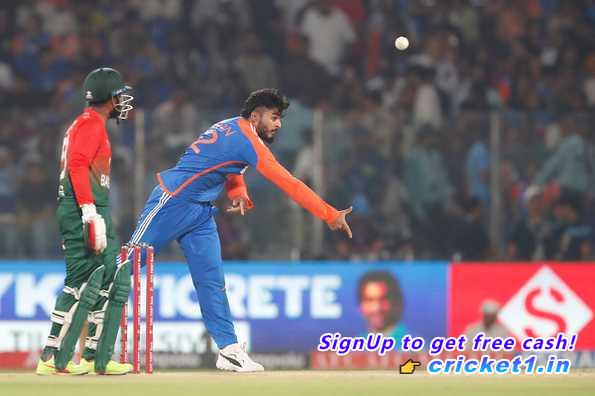
In a showcase of their all-rounded capabilities, Team India demonstrated exceptional depth in their bowling attack during a recent T20I match in Delhi, which set new benchmarks in their cricketing chronicles. Amidst an impressive display not just of fearless batting but also strategic bowling, seven different bowlers contributed with wickets, marking the most extensive use of bowlers by India in a single T20I match. Notably absent from this list of wicket-takers was Hardik Pandya, illustrating India’s burgeoning bowling options.
Leadership under Suryakumar Yadav highlighted this remarkable depth. Even though the team was spoiled for choice, with Yadav not needing to bowl himself, nor did he require Rinku Singh to roll his arm over—despite Singh’s pivotal role in securing a tie against Sri Lanka in a previous match just months earlier. Throughout the series in Delhi and Gwalior, Yadav had the possibility of employing up to 10 bowlers to cover the limited 20 overs, though he thankfully never needed to exercise this full extent of his resources.
The issue of insufficient bowling-capable batters has long been a weak point for India. However, emerging talents like Axar Patel have brought relief to this challenge, a far cry from the last ODI World Cup where the team had to rely heavily on frontline bowlers due to Hardik Pandya’s untimely tournament-ending injury. The dynamics of the current squad present differently, featuring players like Nitish Reddy, who took the new ball in Delhi, and Riyan Parag, who displayed his efficacy in spin-friendly conditions while playing in Sri Lanka. Meanwhile, Abhishek Sharma boasts impressive statistics, having maintained an economy rate just over seven across 134 T20 overs, with his best performance achieving figures of 3 for 7. The impactful contributions of Suryakumar and Rinku in a closely contested match in Pallekele also remain etched in recent memory.
India’s assistant coach, Ryan ten Doeschate, emphasized the importance of having tactical options across different facets of the game. “The way the game is going, it is very rare that all five bowlers or even six bowlers are going to perform consistently on any given day. So it is nice to have options,” he remarked, underscoring the luxury of resting stalwarts like Hardik without compromising the team’s bowling strategy. According to him, balance is essential; the team requires an equilibrium of specialist bowlers alongside versatile players to adapt to varied match scenarios, enabling the captain to exercise strategic selection and ensure the depth of their lineup.
Furthermore, ten Doeschate added, “Balance is so important.
. You don’t want to get into a position where you have too many frontline bowlers, and it’s the same with batters… It gives us a chance to pick a specialist bowler when one is available, when we think the difference is big enough to do that.” India’s team composition thus represents a broad arsenal with invaluable depth, fueling healthy selection competition ahead of upcoming tournaments like the World Cup and the Champions Trophy.
The strategic composition of these “carefully selected” players able to fulfill multiple roles is pivotal to India’s unprecedented depth, offering selection diligence ahead of critical tournaments in the next 18-month period. “These guys can fill multiple roles vital for the balance depending on venues. Look at someone like Riyan. Although he hasn’t shown it this series, he is someone who can perform well as a middle-order batsman, as well as a finisher,” ten Doeschate noted. The team is rapidly identifying and honing talents to meet the expected challenges of upcoming international commitments.
Moreover, India’s talent extend beyond the field; notable players like Jitesh Sharma and Tilak Varma await their moment, while Sanju Samson, who has briefly stepped in as a makeshift opener, looks set to make another appearance. Aspiring debutant Harshit Rana could also see his entry into international cricket soon. Expressing the desire to provide many with international experience, Ryan explained this as part of India’s strategy: “We are trying to expose as many guys as we can to international experience with what we have got coming up.”
Additionally, future opportunities for others underscore the continued emphasis on honing an all-encompassing cricket skillset. This endeavor aims to ensure India’s cricket is responsive to evolving match conditions and ready for strategic depth, ultimately setting the stage for strong performances on the global stage. Ultimately, India seeks not only to be competitive in these series but to integrate as many promising players as possible to prepare for major tournaments, including the Champions Trophy, the Asia Cup, and the World Cup, optimizing performances to future-proof their cricket legacy.

